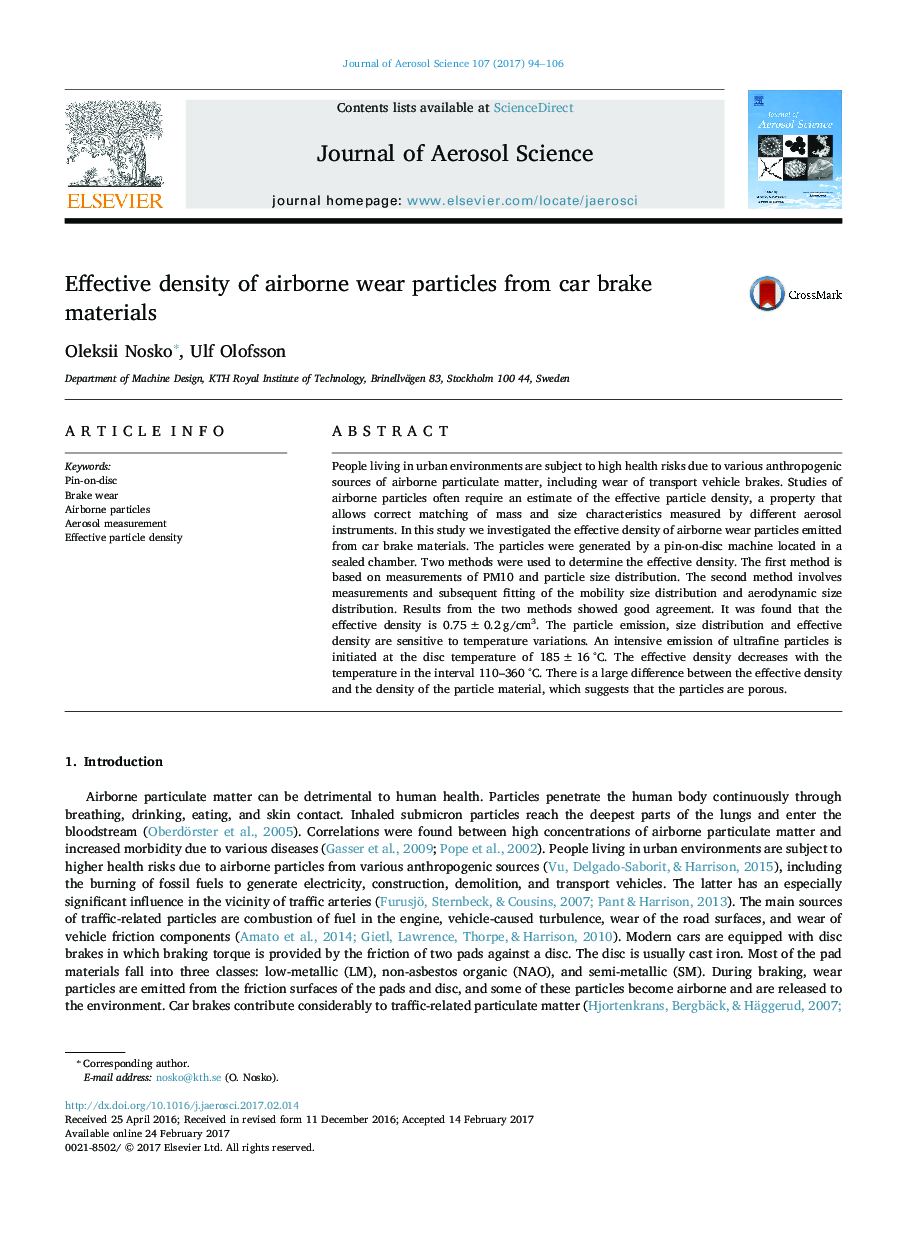| Article ID | Journal | Published Year | Pages | File Type |
|---|---|---|---|---|
| 5754005 | Journal of Aerosol Science | 2017 | 13 Pages |
â¢The effective density of airborne wear particles from car brakes is 0.75±0.2 g/cm3.â¢The effective density of airborne wear particles decreases with temperature.â¢The emission rate of ultrafine wear particles increases substantially at 185±16 °C.
People living in urban environments are subject to high health risks due to various anthropogenic sources of airborne particulate matter, including wear of transport vehicle brakes. Studies of airborne particles often require an estimate of the effective particle density, a property that allows correct matching of mass and size characteristics measured by different aerosol instruments. In this study we investigated the effective density of airborne wear particles emitted from car brake materials. The particles were generated by a pin-on-disc machine located in a sealed chamber. Two methods were used to determine the effective density. The first method is based on measurements of PM10 and particle size distribution. The second method involves measurements and subsequent fitting of the mobility size distribution and aerodynamic size distribution. Results from the two methods showed good agreement. It was found that the effective density is 0.75±0.2 g/cm3. The particle emission, size distribution and effective density are sensitive to temperature variations. An intensive emission of ultrafine particles is initiated at the disc temperature of 185±16 °C. The effective density decreases with the temperature in the interval 110-360 °C. There is a large difference between the effective density and the density of the particle material, which suggests that the particles are porous.
Graphical abstractDownload high-res image (153KB)Download full-size image
